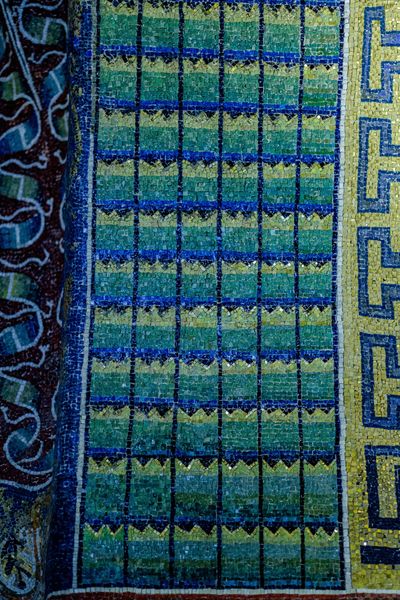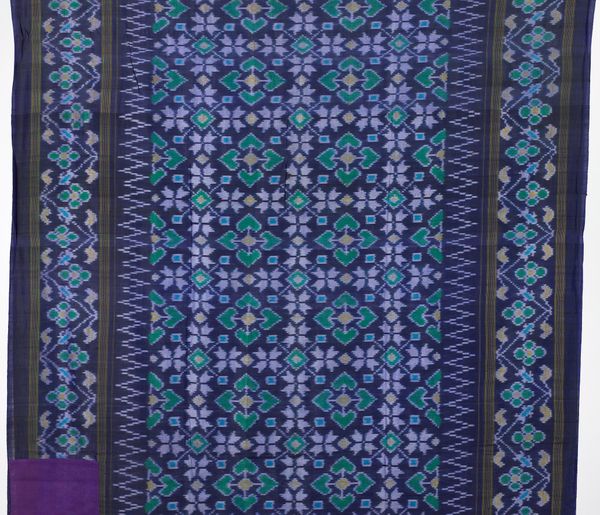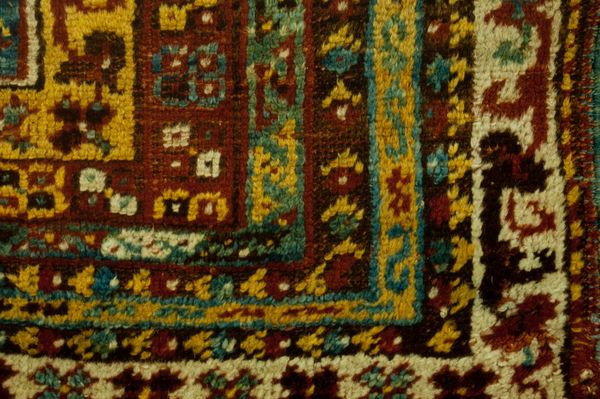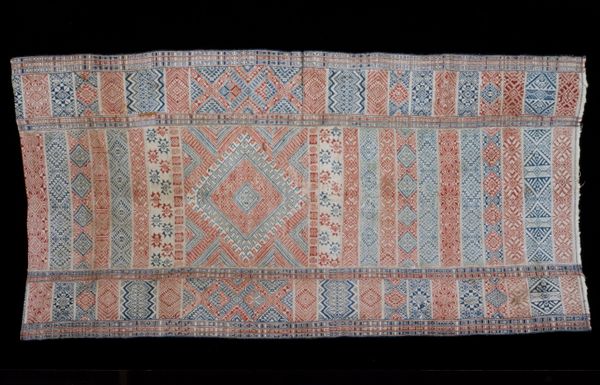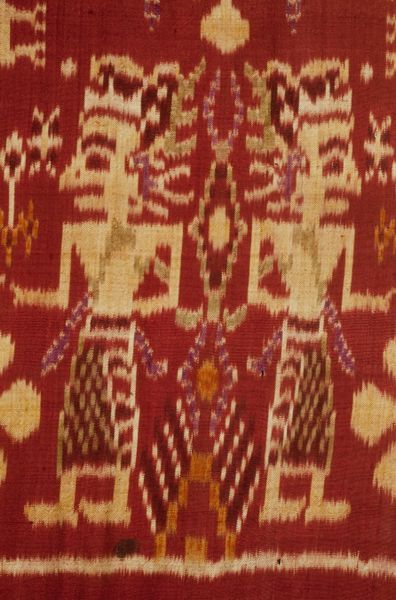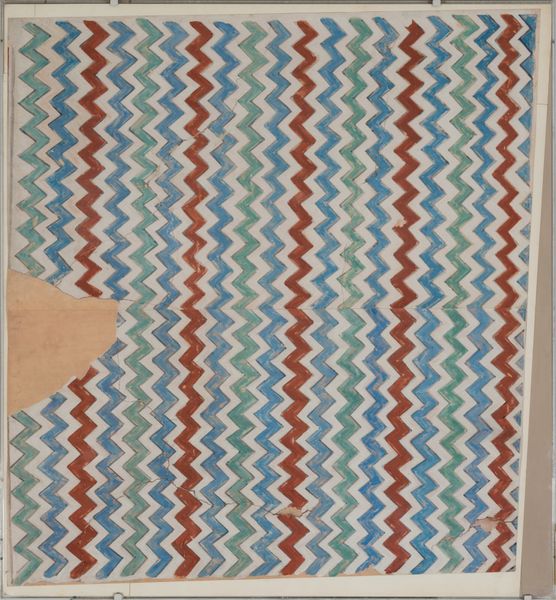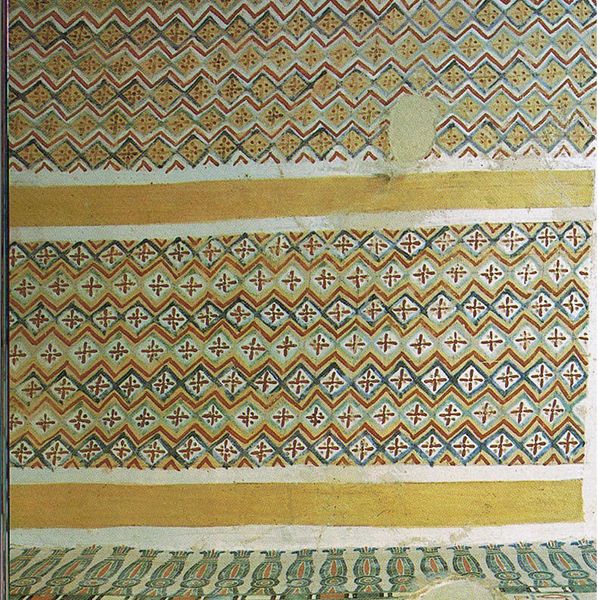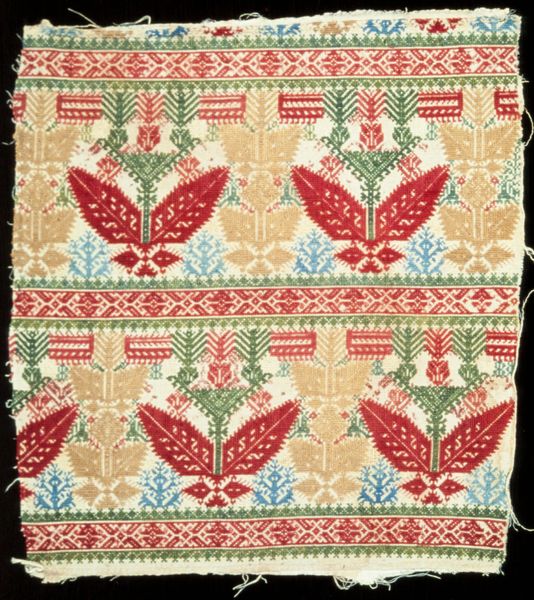
mosaic
#
mosaic
#
byzantine-art
#
geometric
Copyright: Public domain
This mosaic panel was created by Byzantine artists for the Mausoleum of Galla Placidia in Ravenna, Italy, likely in the 5th century. Consider the historical position of the artists, anonymous figures working under the patronage of the powerful Galla Placidia during a period of immense cultural and political transition. The patterns of the mosaic, rendered in rich blues and golds, speak to the visual language of the late Roman Empire, adapted and transformed by the emerging Byzantine aesthetic. The mosaic exemplifies the Byzantine Empire's departure from earlier traditions. The earlier traditional representation focused on naturalism, where figures and objects were depicted in a lifelike manner, compared to the Particolare that represents an abstract pattern. The Mausoleum, and by extension this mosaic, exists as a testament to the complex interplay between power, faith, and artistic expression. It invites us to reflect on the ever-evolving relationship between identity and visual culture.
Comments
No comments
Be the first to comment and join the conversation on the ultimate creative platform.
